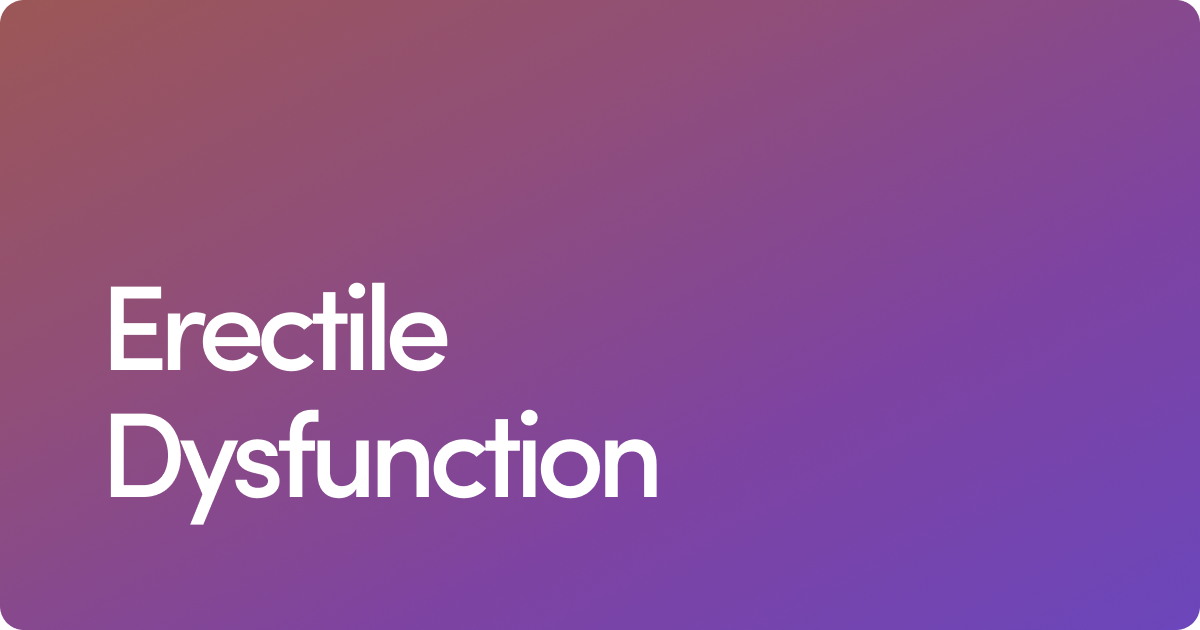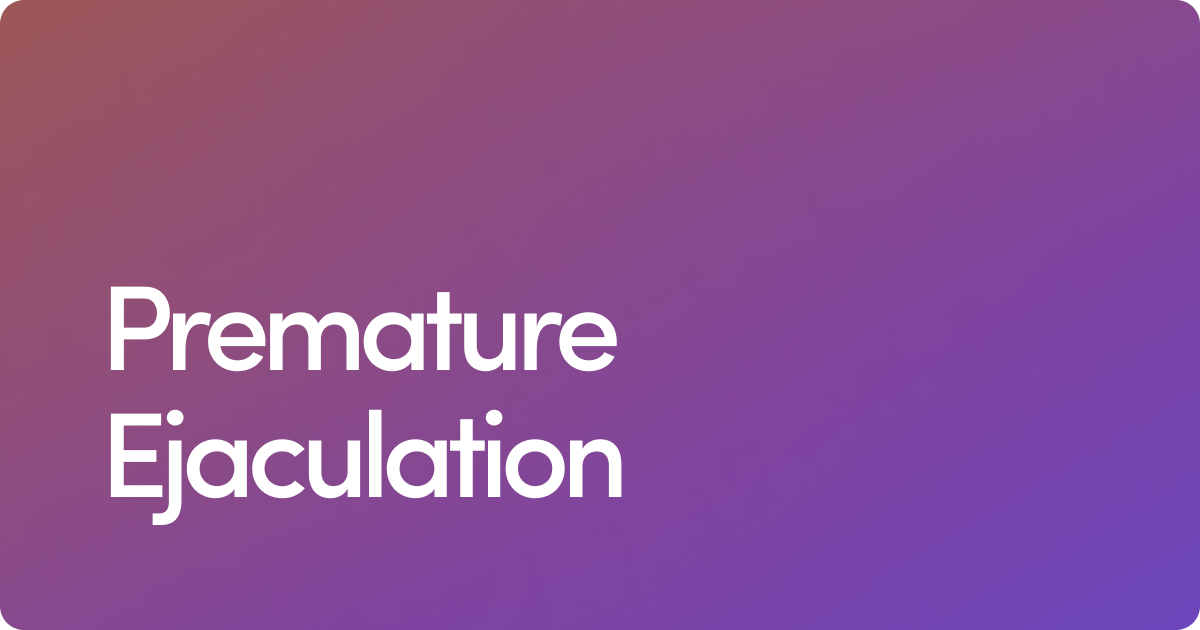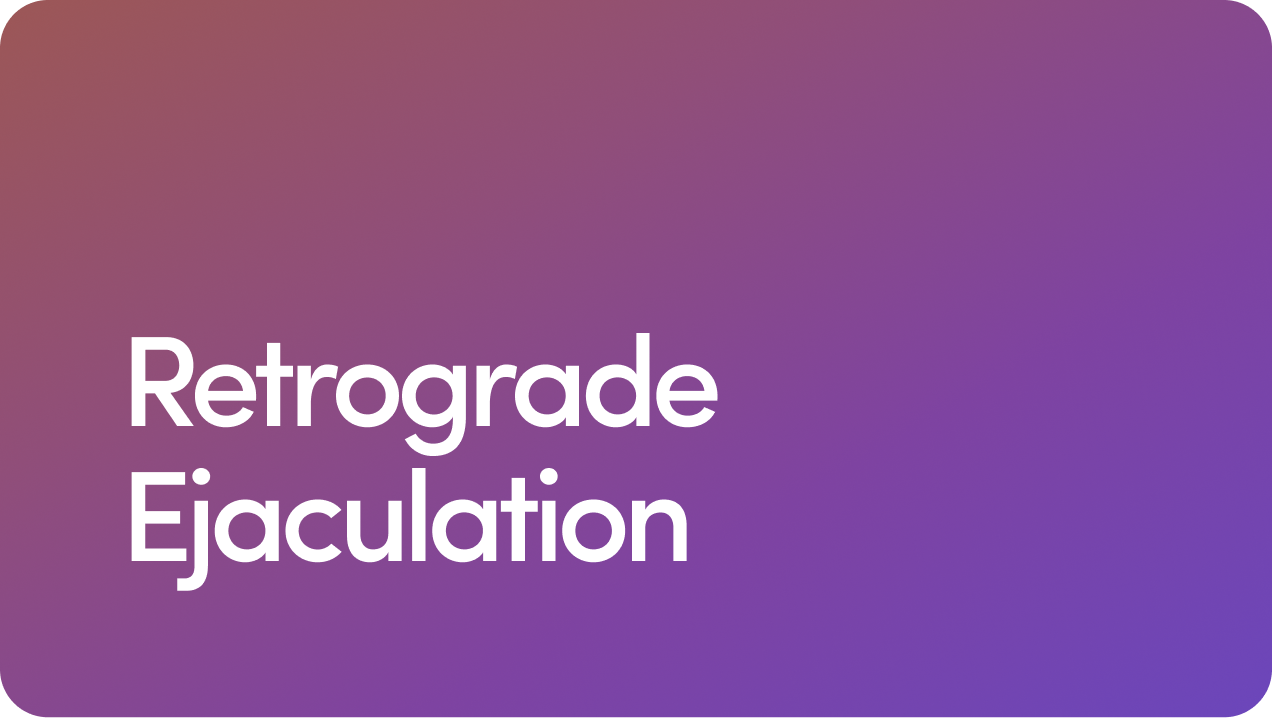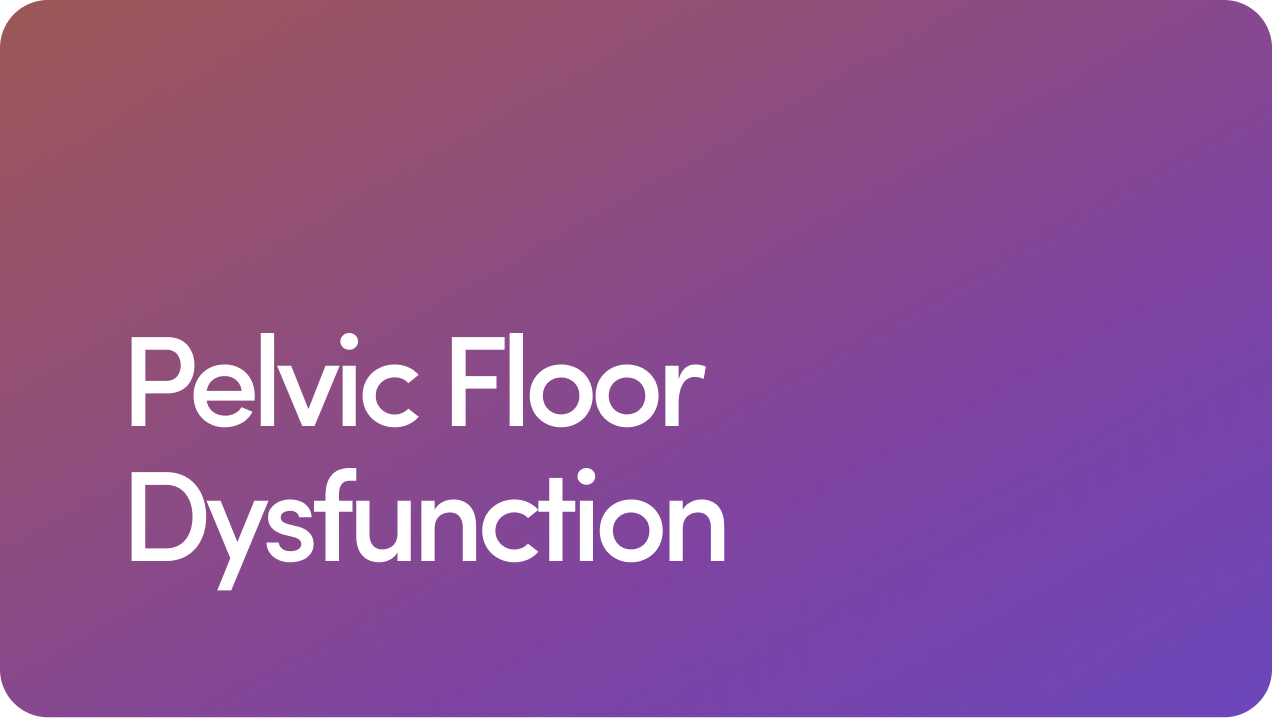Content
Your sex life, your way
How to Quit Porn

Like many kids who grew up in the ‘90s, the first time I saw pornographic content was on late-night cable TV when I was 12. I’d wait until my parents were asleep and the house was quiet before tiptoeing into the living room to watch softcore scenes with the volume turned down. I didn’t care about the dialogue anyway.
But my enjoyment of these secret late-night missions was tinged with shame. Nobody talked openly about sex in my household, so I figured I was doing something dirty and wrong. That didn’t stop me from watching, but it did make me feel bad about myself.
When we got dial-up internet, I found new exciting avenues to explore: cybersex, nude pictures that took forever to download, and eventually, streaming porn clips. From middle school to college and beyond, my interest in porn grew, and so did its accessibility.
Over time, my reasons for watching it became increasingly complicated. What began as an occasional indulgence became a reliable escape route whenever I felt sad, stressed, lonely, or bored. If my emotions were too overwhelming, I could turn them off by turning on my computer instead of developing healthier coping mechanisms. Though I wouldn’t dare admit it to anyone until much later, when my habits started to affect my relationships and mental health, the truth was that watching porn had become an addiction.
Though there’s an ongoing debate on whether or not porn addiction is real, this article will delve into the research on how problematic relationships with porn manifest, who it affects, and how to quit porn if you suspect you might have a problem.
Content
What Is Porn Addiction?
Porn addiction refers to the constant need or compulsion to view porn to the point that it disturbs your daily life.
Although porn addiction is not listed in the Diagnostic and Statistical Manual of Mental Disorders Fifth Edition (DSM-5), many experts believe people can develop problematic and compulsive behaviors around porn. Whether this problematic use classifies as an “addiction” is up for debate. Still, research shows as many as 11 percent of men and 3 percent of women identify as porn addicts.
Like gambling disorder (which is listed in the DSM-5), porn addiction is considered a behavioral addiction. People who are behaviorally addicted tend to exhibit a “problematic consumption model” characterized by loss of control (inability to stop or reduce behavior), impairment (neglect of other areas of life), and risky use (continuing to watch despite knowledge of psychological distress).
How does watching porn become a problematic behavior? According to Ruth Camp-Hernandez, a licensed clinical psychologist and mental health counselor, the brain’s highly effective reward mechanism sits at the center of pornography addiction.
She says, “Every time someone watches porn, the brain triggers a release of dopamine, the chemical responsible for feeling pleasure and joy. This dopamine rush is just like when you take drugs or get drunk. As this pattern keeps up over time, the brain starts to make a strong link between watching porn and feeling good.” She points out that, like other addictions, the problem escalates over time. An addicted person may have to watch more extreme content to experience the same euphoria, which solidifies the addiction.
I recognize this escalation in my own addiction. Over time, I became desensitized to the scenes I watched when I was younger, needing harder, more degrading scenes to keep me engaged. I could spend hours searching for the perfect porn clip, neglecting plans and responsibilities in pursuit of relief. And when I did reach some sense of satisfaction, I’d feel the urge to top it.
Some research describes internet activities like watching porn as “supernormal stimuli” because they deliver unending stimulation and consistently activate the brain’s reward system. Natural behaviors like eating and sex evolved to activate the reward system because they reinforce behaviors that help us survive. But porn hijacks the reward system in a way our ancestors couldn’t have anticipated.
Symptoms of Porn Addiction
Porn addiction may look different for everyone, but some of the most common symptoms include:
Feeling an overwhelming urge to watch porn
Trying and failing to reduce the amount of porn you watch
Neglecting work, friends, family, hygiene, or other parts of your life to watch porn
Spending too much time and/or money buying or watching porn
Preferring porn to real sexual encounters or needing porn to feel aroused
Feeling distressed when porn is inaccessible
Experiencing pain or soreness from excessive masturbation while watching porn
Obsessing about porn throughout the day
Using porn to escape or numb life stressors
Becoming desensitized to porn and needing new types to feel engaged
Some research shows that excessive porn watching can also contribute to physical consequences like erectile dysfunction (ED). In one 2021 study, researchers found a link between problematic porn viewing and ED in men aged 18-35. The median age these men started masturbating to porn was 13-14, and an earlier starting age was associated with higher scores on a cyber pornography addiction test.
Excessive porn use can also lead to body dysmorphia and low self-esteem. Just as I thought my body had to look like the actresses I saw onscreen, you may become convinced that your penis isn’t big enough if you compare yourself to porn actors. You may also feel compelled to emulate what you see on the screen instead of authentically exploring the sexual experiences that feel good to you in real life.
Who Does Porn Addiction Affect?
Porn addiction can affect anyone, but some individuals are at higher risk. According to Camp-Hernandez, “People with mental health issues like anxiety, depression, or OCD might be more at risk of falling into a porn addiction.” She adds that suffering trauma like sexual abuse or watching porn at a very young age may also make a person more susceptible to becoming addicted.
Other risk factors for porn addiction include:
Being a male who lives alone or with your parents
History of substance abuse
Childhood trauma
Relationship difficulties
Loneliness
How to Quit Porn: 5 Tips
Overcoming any addiction takes commitment and patience. What might work for one person may not work as well for another. In my own experience, I had to try many different tactics to overcome porn addiction and enforce new and healthier habits. Therapy, support groups, and even exercise were all part of the process.
Here are five ways you can learn how to overcome porn addiction.
1. Therapy
Cognitive behavioral therapy (CBT) is one of the most effective ways to learn how to overcome pornography addiction. It’s a type of psychotherapy that helps people identify and challenge negative thoughts and behaviors and learn how to respond to challenging situations in a healthier way.
According to a 2021 systematic review, CBT is the chosen intervention for 81 percent of addiction treatment counselors. When used with sex-addicted patients, several studies and case reports have shown the intervention significantly reduces addictive behaviors, such as the frequency of sexual partners and the amount of time spent online during working hours. CBT has also been shown to improve quality of life and reduce depressive symptoms in patients with self-reported problematic porn use.
2. Support Groups
There are many types of support groups you can find online or offline for porn addiction. Sex Addicts Anonymous and the NoFap community are just a couple of examples.
According to Camp-Hernandez, “For most people, group therapy is best because you can work on your addiction and whatever other psych issues with other people in your situation. It just helps recovery to be in community with each other and talk about your story.”
If attending a support group intimidates you, consider confiding in a close friend you trust. They might even serve as an accountability partner.
3. Medication
There have been case studies of treating porn addiction with medications like opioid antagonists, antidepressants, and mood stabilizers.
In one 2020 case report, the opioid antagonist nalmefene “impressively decreased addictive symptoms” and cravings. When the patient discontinued the medication, the cravings immediately returned but then dropped again when treatment recommenced.
Selective serotonin reuptake inhibitors (SSRIs) are also sometimes prescribed to reduce urges and cravings associated with compulsive sexual behaviors. But studies show that the patients who respond best to SSRIs have co-occurring psychiatric disorders, like depression, anxiety, or obsessive-compulsive disorders. SSRIs are also sometimes prescribed off label for sexual dysfunctions like premature ejaculation (PE).
Mood stabilizers like valproic acid and lithium also appear to be effective in managing compulsive sexual behaviors, but mainly in patients with co-occurring bipolar disorder.
4. Lifestyle Changes
Simple tweaks to your lifestyle habits can have a lasting impact on your porn consumption if you suspect you’re overdoing it. They include things like recognizing your triggers, using software that blocks access to porn or triggering social media pages, investing in healthy activities like exercise, journaling, and meditation, and establishing strong relationships.
You may also want to address any secondary issues that may have resulted from your porn addiction, by trying therapy or medication for erectile dysfunction, repairing damaged relationships with loved ones, and more.
5. Learn to Deal With Relapses
Relapses happen, but you don’t have to let them undo all your hard work. If you slip back into old patterns, use it as an opportunity to practice self-compassion. If you’re seeing a mental health professional or attending a support group, share your experience as a way to understand what led to the relapse and what you can do differently to avoid another. Be open to experimentation and willing to try new tactics. Above all, don’t be afraid to keep trying.
For many people, porn can be part of a healthy sex life. Watching porn or masturbating to porn doesn’t necessarily mean you’re addicted, but if you grew up with negative attitudes towards sex, you may think you are.
However, for those who know they have an unhealthy habit and want to know how to stop watching porn, there are strategies that can help. Remember:
Porn addiction isn’t listed in the DSM-5, but many experts believe it exists. While not officially classified as an addiction in the DSM-5, many experts recognize problematic porn use as a form of behavioral addiction or compulsive sexual behavior disorder, characterized by loss of control and impairment in daily life.
Porn can be addictive due to its effects on the brain’s reward system. Like drug addiction and alcoholism, porn activates the brain's reward system and triggers the release of dopamine. This can lead to desensitization, requiring more extreme content over time to achieve the same satisfaction.
Porn addiction can affect anyone, but there are risk factors: Certain individuals, especially those with mental health issues or a history of trauma may be more susceptible to developing porn addiction.
You can learn how to beat porn addiction. Overcoming porn addiction involves commitment and may include seeking professional help, support groups, medication, lifestyle changes, and learning to cope with relapses.
Want more tips on how to invest in a healthy sex life? Check out these tips on how to have better sex, explore six benefits of sex for men, and learn more about the link between pornography and depression.
10 Sources
- Alarcón RU, et al. (2019). Online Porn Addiction: What We Know and What We Don’t—A Systematic Review. https://pmc.ncbi.nlm.nih.gov/articles/PMC6352245/
- Fiando-Montesino, et al. (2023). Management of Concurrent Bipolar I Disorder and Compulsive Sexual Behavior Disorder: A Case Report. https://www.cureus.com/articles/180247-management-of-concurrent-bipolar-i-disorder-and-compulsive-sexual-behavior-disorder-a-case-report#!/
- Fong TI, et al. (2006). Understanding and Managing Compulsive Sexual Behaviors. https://pmc.ncbi.nlm.nih.gov/articles/PMC2945841/
- Frangos CH, et al. (2011). Problematic Internet Use among Greek university students: an ordinal logistic regression with risk factors of negative psychological beliefs, pornographic sites, and online games. https://pubmed.ncbi.nlm.nih.gov/21329443/
- Grubbs JO, et al. (2019). Self-reported addiction to pornography in a nationally representative sample: The roles of use habits, religiousness, and moral incongruence. https://pmc.ncbi.nlm.nih.gov/articles/PMC7044607
- Jacobs TI, et al. (2021). Associations Between Online Pornography Consumption and Sexual Dysfunction in Young Men: Multivariate Analysis Based on an International Web-Based Survey. https://pmc.ncbi.nlm.nih.gov/articles/PMC8569536/
- Lotfi AI, et al. (2021). The effectiveness of intervention with cognitive behavioral therapy on pornography: A systematic review protocol of randomized clinical trial studies. https://pmc.ncbi.nlm.nih.gov/articles/PMC8340575/
- Love TO, et al. (2015). Neuroscience of Internet Pornography Addiction: A Review and Update. https://pmc.ncbi.nlm.nih.gov/articles/PMC4600144/
- Privara MI, et al. (2023). Pornography Consumption and Cognitive-Affective Distress. https://pmc.ncbi.nlm.nih.gov/articles/PMC10399954
- Privara MI, et al. (2023). Sexual development in ADHD and internet pornography consumption. https://pmc.ncbi.nlm.nih.gov/articles/PMC10442643
Editorial Standards
Hims & Hers has strict sourcing guidelines to ensure our content is accurate and current. We rely on peer-reviewed studies, academic research institutions, and medical associations. We strive to use primary sources and refrain from using tertiary references. See a mistake? Let us know at [email protected]!
This article is for informational purposes only and does not constitute medical advice. The information contained herein is not a substitute for and should never be relied upon for professional medical advice. Always talk to your doctor about the risks and benefits of any treatment. Learn more about our editorial standards here.
Mike Bohl, MD
Education
Bachelor of Arts, Egyptian and Ancient Western Asian Archaeology - Brown University | College, 2011
Doctor of Medicine - Brown University | Warren Alpert Medical School, 2017
Master of Public Health - Columbia University | Mailman School of Public Health, 2018
Master of Liberal Arts, Journalism - Harvard University | Harvard Extension School, 2022
Master of Science, Healthcare Leadership - Cornell University | Weill Cornell Graduate School of Medical Sciences, 2024
Master of Business Administration - Cornell University | Samuel Curtis Johnson Graduate School of Management, 2024
Training
Internship - NYU Grossman School of Medicine | Internal Medicine Residency—Community Health Track, 2019
Medical License
New York, 2019
Certificates & Certifications
Certified in Public Health - National Board of Public Health Examiners, 2018
Medical Writer Certified - American Medical Writers Association, 2020
Editor in the Life Sciences - Board of Editors in the Life Sciences, 2020
Certified Personal Trainer - National Academy of Sports Medicine, 2022
Certified Nutrition Coach - National Academy of Sports Medicine, 2023
Board Certified Medical Affairs Specialist - Accreditation Council for Medical Affairs, 2023
Certificate of Advanced Education in Obesity Medicine - Obesity Medicine Association, 2025
Regulatory Affairs Certification - Regulatory Affairs Professionals Society, 2025
Affiliations & Memberships
Specialties & Areas of Focus
General Practice
Previous Work Experience
Medical Expert Board Member - Eat This, Not That!, 2021–
Director Scientific & Medical Content - Stealth Biotech PBC, 2023–2024
Director, Medical Content & Education - Ro, 2021–2023
Associate Director, Medical Content & Education - Ro, 2020–2021
Senior Medical Writer - Ro, 2019–2020
Medical Editor/Writer - Sharecare, 2017–2020
Medical Student Producer - The Dr. Oz Show, 2015–2016
Research Affiliate - University Hospitals of Cleveland, 2013–2014
Publications & Research
Title: Biomechanical evaluation of a novel suturing scheme for grafting load-bearing collagen scaffolds for rotator cuff repair
Published in: Clinical Biomechanics
Date: 2015
URL: https://www.clinbiomech.com/article/S0268-0033(15)00143-6/abstract
Title: Pelvic incidence and acetabular version in slipped capital femoral epiphysis
Published in: Journal of Pediatric Orthopaedics
Date: 2015
Title: Relationship between pelvic incidence and osteoarthritis of the hip
Published in: Bone & Joint Research
Date: 2016
URL: https://boneandjoint.org.uk/Article/10.1302/2046-3758.52.2000552
Title: Effects of PDGF-BB delivery from heparinized collagen sutures on the healing of lacerated chicken flexor tendon in vivo
Published in: Acta Biomaterialia
Date: 2017
URL: https://www.sciencedirect.com/science/article/pii/S1742706117305652
Media Mentions & Features
Dr. Bohl’s medical expertise is regularly featured in consumer health media:
Eat This, Not That!: Contributor and Medical Expert Board Member on nutrition and wellness topics
The Dr. Oz Show: Behind-the-scenes contributor to Emmy Award-winning health segments
Sharecare: Public-facing health writer, simplifying complex medical issues for millions of readers
Why I Practice Medicine
Dr. Bohl developed a passion for medical content while working at The Dr. Oz Show. He realized that, through the media, he could bring important health information to the lives of many more people than he would be able to working in a doctor’s office.
Hobbies & Interests
Biking, resistance training, sailing, scuba diving, skiing, tennis, and traveling
Related Articles
Related Conditions
 Erectile Dysfunction
Erectile Dysfunction
 Premature Ejaculation
Premature Ejaculation
 Low Testosterone
Low Testosterone
 Retrograde Ejaculation
Retrograde Ejaculation
 Pelvic Floor Dysfunction
Pelvic Floor Dysfunction
 Anorgasmia
Anorgasmia